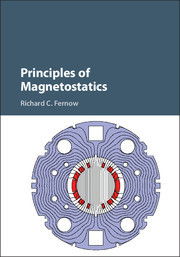Description
Principles of Magnetostatics
Author: Fernow Richard C.
A self-contained discussion of magnetostatics with an emphasis on calculating magnetic fields, suitable for physics and electrical engineering undergraduates.
Language: English
Subject for Principles of Magnetostatics:
Approximative price 120.25 €
In Print (Delivery period: 14 days).
Add to cart
Publication date: 07-2016
Support: Print on demand
Support: Print on demand
Description
/li>Contents
/li>Biography
/li>
The subject of magnetostatics - the mathematical theory that describes the forces and fields resulting from the steady flow of electrical currents - has a long history. By capturing the basic concepts, and building towards the computation of magnetic fields, this book is a self-contained discussion of the major subjects in magnetostatics. Overviews of Maxwell's equations, the Poisson equation, and boundary value problems pave the way for dealing with fields from transverse, axial and periodic magnetic arrangements and assemblies of permanent magnets. Examples from accelerator and beam physics give up-to-date context to the theory. Furthermore, both complex contour integration and numerical techniques (including finite difference, finite element, and integral equation methods) for calculating magnetic fields are discussed in detail with plentiful examples. Both theoretical and practical information on carefully selected topics make this a one-stop reference for magnet designers, as well as for physics and electrical engineering undergraduate students.
Preface; 1. Basic concepts; 2. Magnetic materials; 3. Potential theory; 4. Conductor-dominant transverse fields; 5. Complex analysis of transverse fields; 6. Iron-dominant transverse fields; 7. Axial field configurations; 8. Periodic magnetic channels; 9. Permanent magnets; 10. Time-varying fields; 11. Numerical methods; Appendices: A. Symbols and SI units; B. Vector analysis; C. Bessel functions; D. Legendre functions; E. Complex variable analysis; F. Complete elliptic integrals; Index.
Richard C. Fernow received his PhD from Syracuse University for work on particle physics, and worked at Brookhaven National Laboratory. He contributed to the optimization of the coil design for collider magnets and made calculations of magnetic fields in solenoid channels. He is a member of the American Physical Society.
© 2024 LAVOISIER S.A.S.

